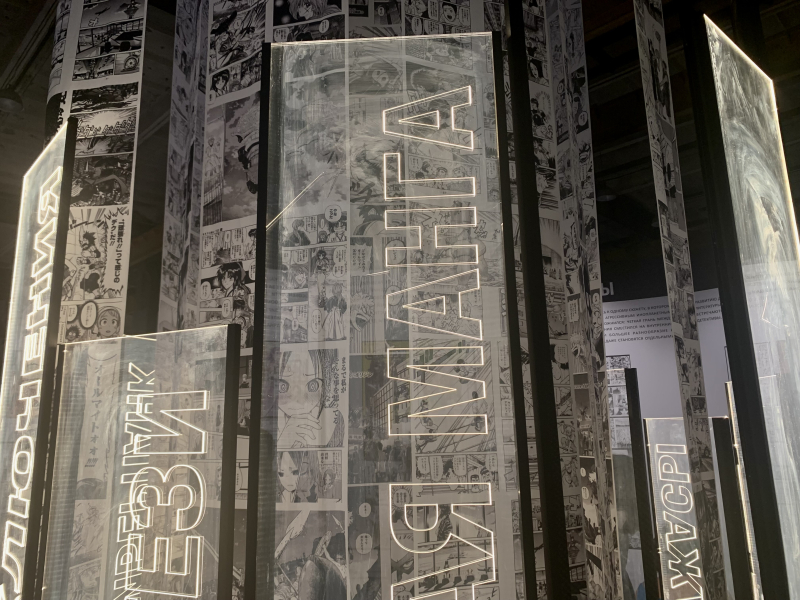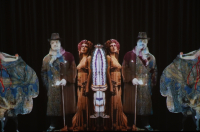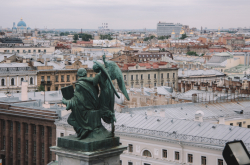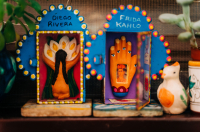Disclaimer: the exhibition is in Russian, including all the accompanying posters and audio materials.
Before the exhibition
From what I remember, there were few other exhibitions, including my personal favorite ¡VIVA LA VIDA! back in 2019, that I was just as excited about. Whether it was because I had just finished Mob Psycho 100 or was on the wait for Attack on Titan ending, the moment I saw the announcement, I knew I’d make it there. And finally, after several plans ruined, the day had come – the tickets were purchased, the partner-in-crime was found, and what was promoted as “the largest exhibition of manga in the world” was just behind the door on the second floor of the Tsekh building in Sevkabel Port.
At the exhibition
As we passed the door, we found ourselves in a dimly-lit room with black-and-white posters on a bright orange wall and a sort of a tunnel in the end. Though I already knew it, it was the start of tons and tons of reading that we were about to do. The posters explained what manga is (the word means “pictures” in Japanese) and the rules of the game (aka how to read it: from right to left, from top to bottom), as well as introduced us to two kids, a sister and a brother, with whom we were about to embark on this journey.
What awaited us?
Knowledge, knowledge, and knowledge. This is indeed an educational exhibition. As someone who has made peace with the fact that exhibitions typically throw you into the thick of action with little to no context, I was personally surprised by the amount of info on display: from the history of the genre in chronological order to how manga is produced and what inspired renowned manga creators. But the abundance of facts to consume is just as much a pro as it’s a con, specifically if you're not much of a reader – or know manga like the back of your hand. And one more thing: if you’re not that used to the reading rules of manga, you’re bound to have your moments of embarrassment – to the point where you even get confused about where you should go next (true story).
A world of artifacts under one roof. Archival materials, original editions, action figures, posters, and recorded interviews – the display has it all and even more. As I traveled from one exhibit to another, I went from the Pumpkin King performing “What’s this?” to the member berry going “Member?”, “Oh, I member.” Among the exhibition's cherries on top are the nearly 11-meter-long Emakimono, the Great Wave off Kanagawa, the 1999 edition of Naruto, and a signed poster of Sailor Moon.
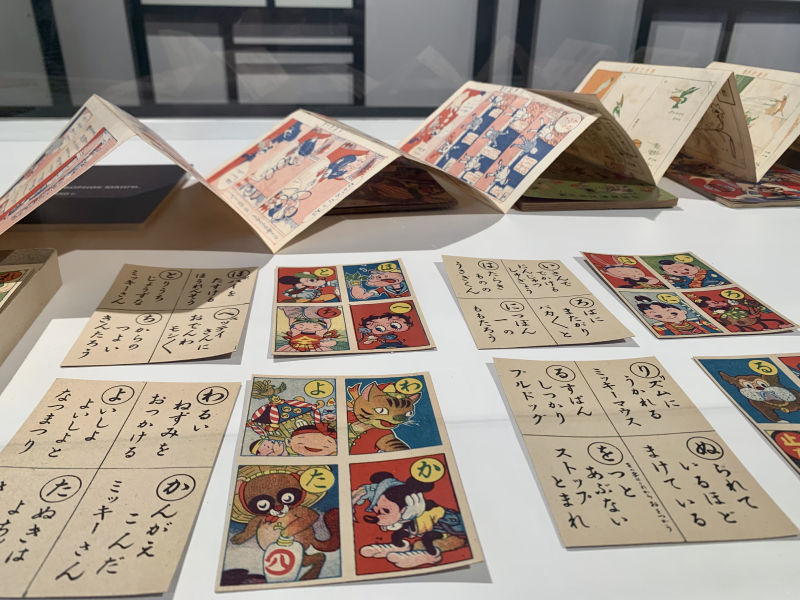
Photo courtesy of the author
An ongoing narrative. Interestingly enough, the story about the siblings who found themselves in the world of manga starts not at the exhibition but way earlier, when you go to the website to purchase tickets and learn all about the display in the form of a manga, surely with a to-be-continued hook. Then, when you finally make it to the exhibition, the narrative starts to unfold as if you were living the story in reality.
Sailor Moon, Eren Yeager and co., and others. In addition to history-centered halls, the display delights visitors with mediamixes of varied genres, including Pokémon Adventures, Neon Genesis Evangelion, Ghost in the Shell, as well as Sailor Moon, the works of Studio Ghibli, and Attack on Titan. Better still, the three latter series earned their own separate halls at the exhibition where you can take a pic of yourself sitting on the moon and learn about other Sailors (btw, I’m Sailor Mercury), stand by a giant head of Colossal Titan or feel yourself like one looking at a town, or see the long-familiar Totoro, Sophie and Howl, and others.
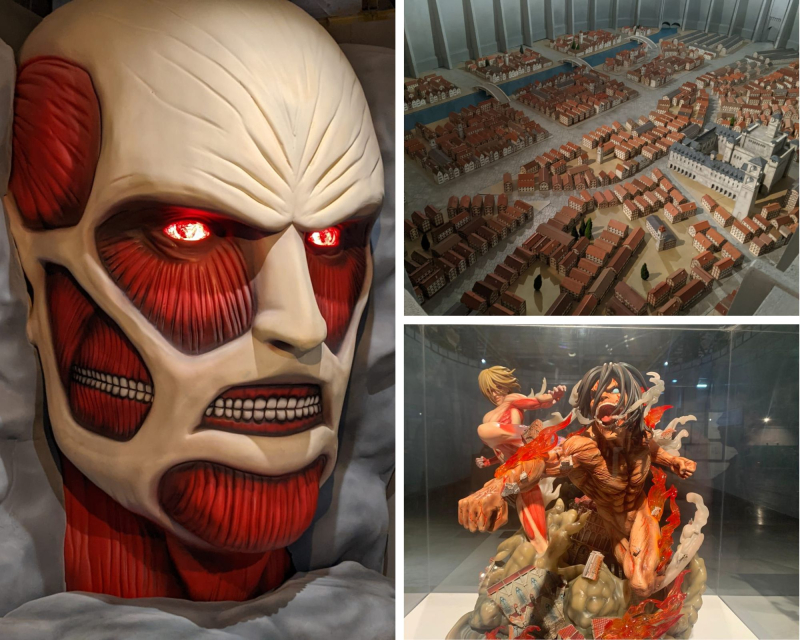
Attack on Titan's hall. Photo courtesy of the author
Famous manga artists and a mangaka workspace. If that’s still not enough, you will also get to listen to the interviews of influential manga artists (or mangakas) and creators who shaped the industry, such as Takeshi Obata (Death Note and Bakuman), Eiichiro Oda (One Piece), and Hajime Isayama (Attack on Titan), as well as explore the workplaces of mangakas and their art supplies.
Russian comics & graphic novels. Supported by Bubble Comics (a Russian comic book publisher – Ed.), the display, as well, introduces all manga fans to the works of Russian comic creators, with a particular focus on Major Grom. In the room devoted to the comic series, you will find a collection of memorabilia, like the mask of Plague Doctor and jackets of Igor Grom, printed issues, and footage from the film shooting.
After the exhibition
Frankly speaking, I couldn’t understand my feelings for a while as I was walking out of the exhibition, giggling at Naruto-themed instant ramen and the Russian-greats-turned-anime-characters poster. Although I did enjoy what I saw, especially the town mockup in the Attack on Titan's hall, I realized that the display works best for those not very familiar with the topic, history-wise at least. Otherwise, a huge part of the exhibition will go to waste for you. It could also use a bit more diversity in terms of art media. But even with all that, this is a one-of-a-kind exhibition – with a marine view as a bonus – that will totally make your day, whether you are a manga fan or not yet.
The exhibition is on at Sevkabel Port till September 3, 2023. You can learn more about the event and purchase tickets here.
